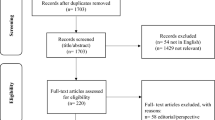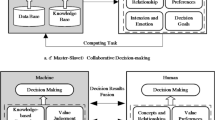Abstract
In a medical environment such as Intensive Care Unit, there are many possible reasons to cause errors, and one important reason is the effect of human intellectual tasks. When designing an interactive healthcare system such as medical Cyber-Physical-Human Systems (CPHSystems), it is important to consider whether the system design can mitigate the errors caused by these tasks or not. In this paper, we first introduce five categories of generic intellectual tasks of humans, where tasks among each category may lead to potential medical errors. Then, we present an integrated modeling framework to model a medical CPHSystem and use UPPAAL as the foundation to integrate and verify the whole medical CPHSystem design models. With a verified and comprehensive model capturing the human intellectual tasks effects, we can design a more accurate and acceptable system. We use a cardiac arrest resuscitation guidance and navigation system (CAR-GNSystem) for such medical CPHSystem modeling. Experimental results show that the CPHSystem models help determine system design flaws and can mitigate the potential medical errors caused by the human intellectual tasks.







Similar content being viewed by others
Notes
This paper is an extension of our previously published 6 pages conference paper on the 2016 IEEE International Conference on Systems, Man, and Cybernetics (SMC 2016).
References
Ameur, Y. A, Baron, M., Girard, P.: Formal validation of hci user tasks. In: Software Engineering Research and Practice, pp. 732–738 (2003)
Basnyat, S., Palanque, P., Schupp, B., Wright, P., Formal socio-technical barrier modelling for safety-critical interactive systems design. Saf. Sci. 45(5):545–565, 2007.
Bastide, R., Navarre, D., Palanque, P., A tool-supported design framework for safety critical interactive systems. Interact. Comput. 15(3):309–328, 2003.
Bolton, M. L, and Bass, E. J: Enhanced operator function model: A generic human task behavior modeling language. In: SMC 2009. IEEE International Conference on Systems, Man and Cybernetics, 2009, pp. 2904–2911. IEEE (2009)
Bolton, M. L, Siminiceanu, R., Bass, E. J, et al., A systematic approach to model checking human-automation interaction using task analytic models. IEEE Trans. Syst. Man Cybern. Part A: Syst. Humans 41(5):961–976, 2011.
Campos, J. C, and Harrison, M. D, Modelling and analysing the interactive behaviour of an infusion pump. Electronic Communications of the EASST 45, 2011.
De Moura, L., Owre, S., Shankar, N., The sal language manual. Computer Science Laboratory, SRI International, Menlo Park, Tech Rep CSL-01-01, 2003.
Degani, A., and Heymann, M., Formal verification of human-automation interaction. Human Factors: J. Human Factors Ergon. Soc. 44(1):28–43, 2002.
Donchin, Y., Gopher, D., Olin, M., Badihi, Y., Biesky, M. R, Sprung, C. L, Pizov, R., Cotev, S., A look into the nature and causes of human errors in the intensive care unit. Crit. Care Med. 23(2):294–300, 1995.
Hughes, D., and Dornheim, M. A, Accidents direct focus on cockpit automation. Aviat. Week Space Technol. 142(5):52–54, 1995.
John, B. E, and Kieras, D. E, Using goms for user interface design and evaluation: Which technique? ACM Trans. Comput.-Human Interact. (TOCHI) 3(4):287–319, 1996.
Joshi, A., Miller, S. P, Heimdahl, M.: Mode confusion analysis of a flight guidance system using formal methods. In: Proceedings of the 22nd Digital Avionics Systems Conference (DASC?03), pp. 12–16 (2003)
Kang, W., Wu, P., Rahmaniheris, M., Sha, L., Berlin, R. B, Goldman, J. M: Towards organ-centric compositional development of safe networked supervisory medical systems. In: 2013 IEEE 26th International Symposium on Computer-Based Medical Systems (CBMS), pp. 143–148. IEEE (2013)
Karanjia, P., Nelson, J., Lefkowitz, D., Dick, A., Toole, J., Chambless, L., Hayes, R., Howard, V., Validation of the acas tia/stroke algorithm. Neurology 48(2):346–351, 1997.
Kim, C., Sun, M., Rahmaniheris, M., Sha, L.: How to reliably integrate medical devices over wireless. In: 2012 9th Annual IEEE Communications Society Conference on Sensor, Mesh and Ad Hoc Communications and Networks (SECON), pp. 85–87. IEEE (2012)
Larsen, K. G, Pettersson, P., Yi, W., Uppaal in a nutshell. Int. J. Softw. Tools Technol. Trans. (STTT) 1(1):134–152, 1997.
Leveson, N. G, and Turner, C. S, An investigation of the therac-25 accidents. Computer 26(7):18–41, 1993.
Masci, P., Ayoub, A., Curzon, P., Lee, I., Sokolsky, O., Thimbleby, H.: Model-based development of the generic pca infusion pump user interface prototype in pvs. In: Computer Safety, Reliability, and Security, pp. 228–240. Springer (2013)
Neumar, R. W, Otto, C. W, Link, M. S, Kronick, S. L, Shuster, M., Callaway, C. W, Kudenchuk, P. J, Ornato, J. P, McNally, B., Silvers, S. M, et al., Part 8: Adult advanced cardiovascular life support 2010 american heart association guidelines for cardiopulmonary resuscitation and emergency cardiovascular care. Circulation 122(18 suppl 3):S729–S767, 2010.
Palanque, P. A, Bastide, R., Sengès, V: Validating interactive system design through the verification of formal task and system models. In: EHCI, pp. 189–212 (1995)
Rothschild, J. M, Landrigan, C. P, Cronin, J. W, Kaushal, R., Lockley, S. W, Burdick, E., Stone, P. H, Lilly, C. M, Katz, J. T, Czeisler, C. A, et al., The critical care safety study: The incidence and nature of adverse events and serious medical errors in intensive care*. Crit. Care Med. 33(8):1694–1700 , 2005.
Shapiro, N. I, Howell, M., Talmor, D., A blueprint for a sepsis protocol. Acad. Emerg. Med. 12(4): 352–359, 2005.
Shapiro, N. I, Howell, M. D, Talmor, D., Lahey, D., Ngo, L., Buras, J., Wolfe, R. E, Weiss, J. W, Lisbon, A., Implementation and outcomes of the multiple urgent sepsis therapies (must) protocol*. Crit. Care Med. 34(4):1025–1032, 2006.
Strzyzewski, N., Common errors made in resuscitation of respiratory and cardiac arrest. Plast. Surg. Nurs. 26(1):10–14, 2006.
Talmor, D., Greenberg, D., Howell, M. D, Lisbon, A., Novack, V., Shapiro, N., The costs and cost-effectiveness of an integrated sepsis treatment protocol. Crit. Care Med. 36(4):1168–1174, 2008.
Wu, P. L., Raguraman, D., Sha, L., Berlin, R. B, Goldman, J. M: A treatment validation protocol for cyber-physical-human medical systems. In: 2014 40th EUROMICRO Conference on Software Engineering and Advanced Applications (SEAA), pp. 183–190. IEEE (2014)
Wu, P. L, Nam, M. Y, Choi, J., Kirlik, A., Sha, L., Berlin, R., Medical best practice guidance navigation and control (GN&C) system for supporting situation awareness. Tech. rep., University of Illinois at Urbana Champaign, 2015.
Yun, H., Wu, P. L, Rahmaniheris, M., Kim, C., Sha, L.: A reduced complexity design pattern for distributed hierarchical command and control system. In: Proceedings of the 1st ACM/IEEE International Conference on Cyber-Physical Systems, pp. 42–49. ACM (2010)
Author information
Authors and Affiliations
Corresponding author
Additional information
This article is part of the Topical Collection on Systems-Level Quality Improvement
Rights and permissions
About this article
Cite this article
Ou, A.YZ., Jiang, Y., Wu, PL. et al. Preventable Medical Errors Driven Modeling of Medical Best Practice Guidance Systems. J Med Syst 41, 9 (2017). https://doi.org/10.1007/s10916-016-0614-2
Received:
Accepted:
Published:
DOI: https://doi.org/10.1007/s10916-016-0614-2




